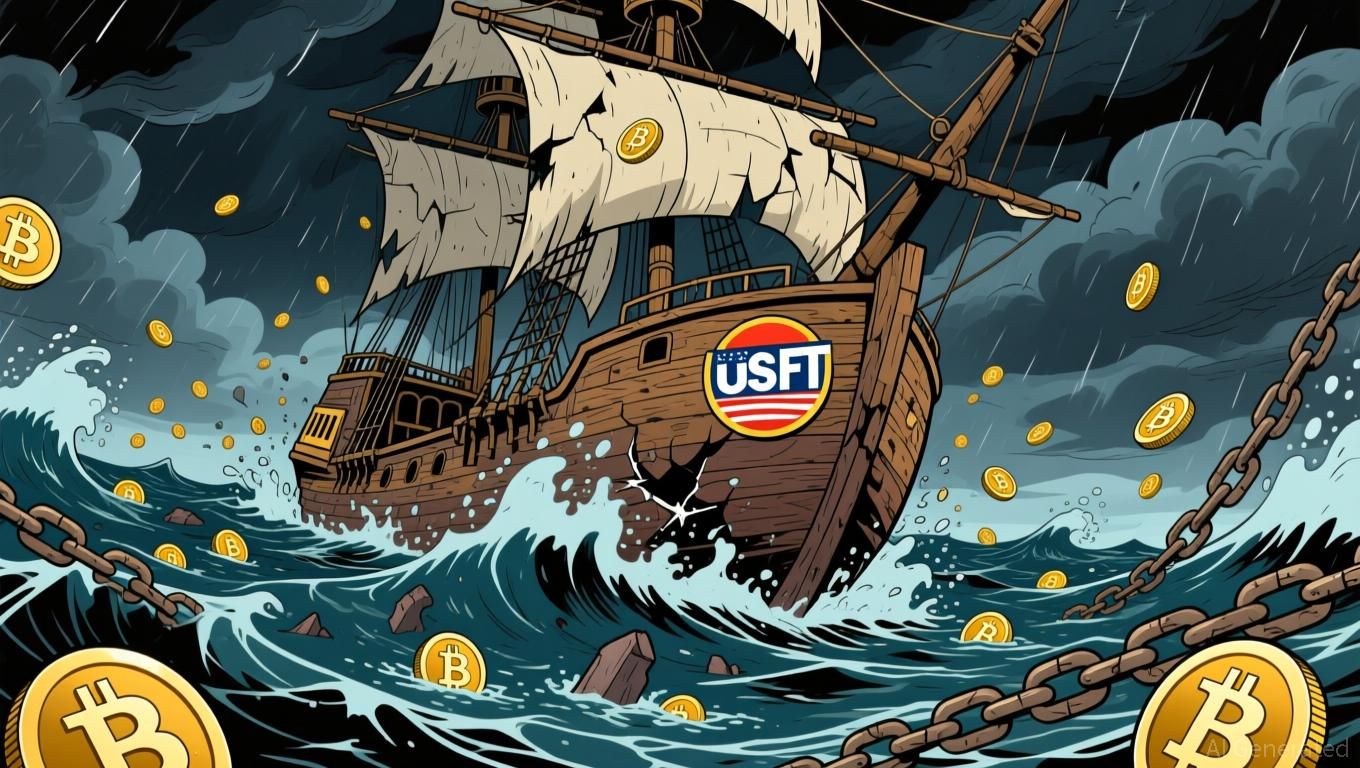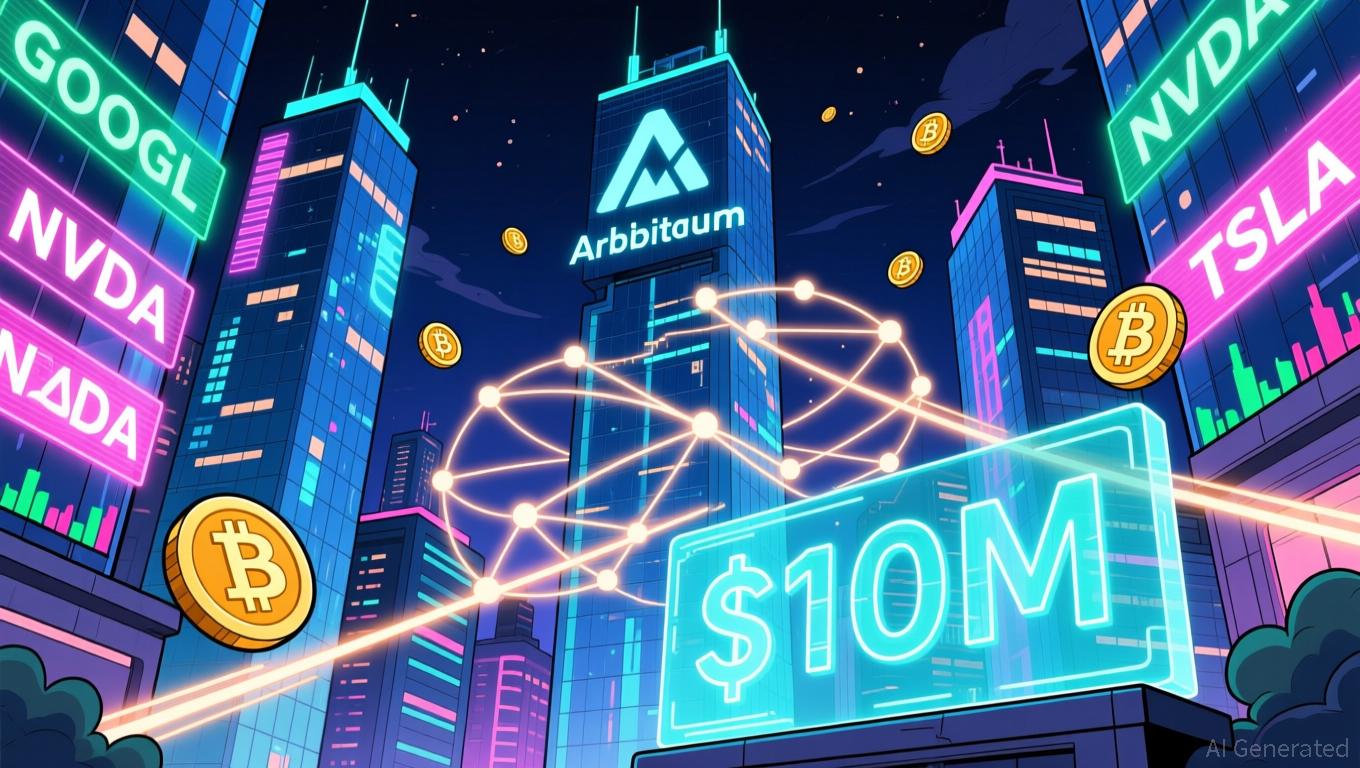Vitalik Buterin's Advances in Zero-Knowledge Technology and Their Impact on Blockchain Scalability
- Vitalik Buterin drives blockchain's ZK revolution, positioning zero-knowledge proofs as scalability and privacy solutions for Ethereum and emerging ZK-native projects. - Ethereum's Dencun upgrade (2025) slashed L2 data costs by 90-98%, enabling ZKsync and StarkNet to process 15,000+ TPS at near-zero fees. - ZKP project redefines blockchain architecture by natively integrating ZK validation, compute, and staking into a unified verifiable framework. - Institutional adoption accelerates as ZK Layer 2 market
Ethereum’s ZK Transformation: From Modular Enhancements to Streamlined Design
Ethereum’s development plan has consistently prioritized scalability, with Buterin advocating for ZK-rollups to address the network’s throughput bottlenecks. The Dencun upgrade, launched in early 2025, brings this vision to life by
Buterin’s attention has now turned to
ZK-Native Initiatives: Constructing the Next Generation from Scratch
While Ethereum’s upgrades are modular, projects such as Zero Knowledge Proof (ZKP) are reshaping blockchain design by embedding ZK mechanisms at the core. In contrast to Ethereum’s layered model,
The Atlas upgrade on ZKsync further demonstrates the promise of ZK-native platforms. By transforming liquidity flow between Layer 1 and Layer 2, Atlas
Multi-Layered Security: ZK Proofs and Their Extensions
Buterin’s ambitions go beyond just scalability, encompassing privacy and security as well. In 2025,
For example, ZK proofs alone cannot fully prevent coercion in voting, but when combined with MPC and TEE, they form a strong basis for secure and verifiable results
Institutional Momentum and Market Outlook
The ZK Layer 2 sector is expected to expand at a 60.7% compound annual growth rate (CAGR),
Nonetheless, obstacles remain.
Investment Landscape: Leading Projects and Potential Pitfalls
For those looking to invest, the ZK ecosystem presents both significant growth prospects and inherent risks. ZKsync (ZKS) and StarkNet (STRK) are at the forefront in DeFi and gaming, with
However, investors should remain cautious. The ecosystem’s dependence on Buterin’s research and Ethereum’s direction means that any changes in technical focus could impact valuations. Furthermore,
Conclusion: The Road Ahead for ZK Technology
Vitalik Buterin’s pioneering work has established ZK technology as the foundation for the next era of blockchain. From Ethereum’s Dencun and Lean upgrades to ZK-native ventures like ZKP, the industry is achieving new heights in scalability and security. With institutional adoption accelerating, the ZK Layer 2 space is set for remarkable expansion, presenting investors with a rare chance to benefit from a fundamental transformation in decentralized infrastructure.
Success in this evolving landscape will require a balance of enthusiasm and caution. While the promise of ZK is clear, its future sustainability will hinge on overcoming both technical and regulatory hurdles—a challenge that Buterin and his collaborators are uniquely equipped to meet.
Disclaimer: The content of this article solely reflects the author's opinion and does not represent the platform in any capacity. This article is not intended to serve as a reference for making investment decisions.
You may also like
Bitcoin Updates: Tether Faces Scrutiny Over Stability—S&P Issues Caution While Crypto Community Responds
- S&P Global Ratings downgraded Tether's USDT to "weak," citing high-risk Bitcoin exposure and reserve transparency concerns. - Tether criticized the rating as "misleading," defending its 1:1 dollar peg and $135B Treasury holdings as evidence of stability. - The downgrade highlights regulatory tensions as USDT faces scrutiny under new laws requiring stablecoins to be fully backed by low-risk assets. - Despite risks, USDT maintains $184B market cap and $76B daily volume, underscoring its critical role in cr

Bitcoin Updates: Tether’s Gold Holdings Confront U.S. Regulations, Drive Gold Prices Up by 50%
- Tether , issuer of USDT , now holds 116 tons of gold ($12.9B), surpassing reserves of central banks like South Korea and Hungary. - Its 26-ton Q3 gold purchase (2% of global demand) boosted gold prices 50% YTD, while Bitcoin reserves ($9.9B) challenge U.S. liquidity rules. - The firm plans to launch gold-free USAT for U.S. compliance, but S&P downgraded its dollar-peg stability due to non-liquid assets and transparency concerns. - Tether's $300M gold royalty investments and XAU₮ token ($2.1B market cap)
Robinhood’s Tokenized Shares Transform Global Finance, Approaching $10M RWA Ceiling
- Robinhood tokenized major stocks (GOOGL, NVDA , TSLA) on Arbitrum One, pushing RWA market cap toward $10M. - Arbitrum's low-cost layer-2 infrastructure enables seamless blockchain-traditional finance integration via tokenization. - Hybrid portfolios blending RWAs and meme tokens emerge, with DeFi collateralization and fractional ownership expanding use cases. - Platform blurs trading boundaries, risking amplified volatility while demonstrating blockchain's potential for financial accessibility. - Regulat

Cardano News Today: Cardano's Prospects for a 2026 Breakthrough Strengthen Thanks to Ecosystem Growth and Technological Advances
- Cardano's ADA token nears $0.50 as open interest rises 6%, supported by on-chain buy-side dominance and positive derivatives funding rates. - Technical indicators show RSI recovery and bullish MACD convergence, with $0.49 breakout potential triggering wedge pattern targets. - Founder Charles Hoskinson outlined 2026 roadmap including privacy token NIGHT, Kenya/Uganda microloan platform RealFi, and cross-chain scaling via Leios/Hydra. - Strategic focus on DeFi integration, TVL growth, and multi-chain inter
